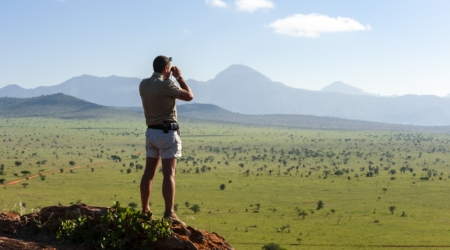A new gorilla census and research project is attempting to count the estimate number of mountain gorillas currently living in Bwindi impenetrable forest national park in southwestern Uganda. Three previous censuses have been carried out in this 331 sq km Bwindi national park, as part of the Uganda wildlife Authority and government efforts to measure the entire gorilla population in Bwindi.
Since Bwindi was gazetted in 1991 and declared part of the world heritage natural sites, Uganda has had a go at counting mountain gorillas. The first census in 1997 conservationists counted 300 gorillas, whereas surveys in 2006 counted 320 and the last one in 2011 yielded results showing 400 gorillas.
Evidence from these series of census indicates that the population of mountain gorillas in Uganda is increasing. In the whole world there are only 880 gorillas which live in Uganda, Rwanda and DR Congo. And Bwindi with a total of 400 individuals, it has half number of world’s mountain gorillas. This confirms that the Ugandan government efforts to conserve gorillas are effective.
Bwindi has attracted many visitors who come to see gorillas while on gorilla tracking safari. This is based on the habituated gorilla families which are about 12 including 2 that are still under research process known as gorilla habituation experience.
To protect and conserve gorillas, it is critical to carry out a new census which is aimed at establishing accurate gorilla identification and also keep records of large mammals and signs of illegal activities such as poaching.
Tracking and counting gorillas is a difficult task as they live at a range of altitudes between 1100-2000 meters in dense tropical rainforest mountains. It is therefore being conducted by gorilla research experts from Dian Fossey Gorilla Fund staff, Uganda and Democratic Republic of Congo funded by international gorilla conservation program.
There are 12 teams of experts who will conduct the survey of the entire Bwindi forest. They will be studying evidence of gorillas by looking for trails, signs and counting nests, which are easier to estimate the number rather than real sightings.
Gorillas will also surveyed by examining and collecting samples of their faces for genetic analysis to obtain accurate identification of gorillas.
As to whether gorillas in Uganda are increasing, conservationists are uncertain. There are a number of reasons why mountain gorillas are increasing in number. These include improvement in conservation management of gorilla habitats, monitoring and law enforcement by rangers and gorilla tourism.
The surveying team warns that although the numbers are encouraging, careful monitoring of gorilla population in Bwindi is necessary because their habitat is still threatened by human encroachment and poaching.



















